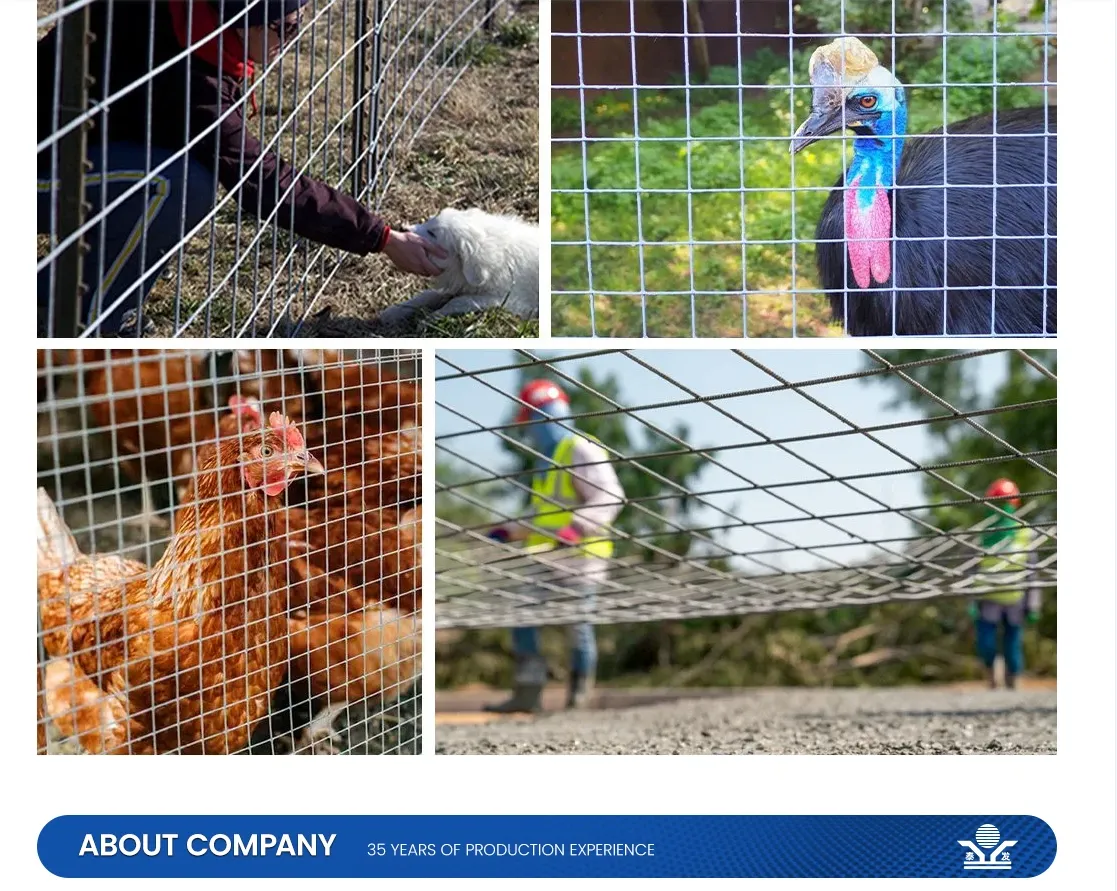The Versatility and Applications of Heavy Wire Screens
Heavy wire screens are an essential component in various industrial processes and applications. Their robust construction and durability make them an ideal choice for many demanding environments. These screens are typically made from high-quality steel or stainless steel wire and are meticulously designed to withstand significant stresses while maintaining their structural integrity. This article aims to explore the characteristics, manufacturing process, applications, and advantages of heavy wire screens.
Characteristics of Heavy Wire Screens
One of the primary characteristics of heavy wire screens is their strength. Unlike standard screens that may be made from lighter materials, heavy wire screens can endure considerable pressure, making them suitable for heavy-duty applications. The wires are usually thicker, which allows these screens to resist deformation and wear over time. Another key feature is their customizability. Heavy wire screens can be manufactured in various mesh sizes, thicknesses, and dimensions, catering to specific needs and ensuring optimal performance for various uses.
Moreover, heavy wire screens are resistant to corrosion and abrasion, especially when made from stainless steel. This resistance means they can be utilized in harsh environments, including those involving chemicals and extreme temperatures. Additionally, heavy wire screens facilitate excellent airflow while allowing for specific particle sizes to pass through. This characteristic plays a crucial role in ensuring efficiency in various processes, such as filtering and screening.
Manufacturing Process
The manufacturing process of heavy wire screens is meticulously executed to ensure high quality and reliability. It begins with the selection of materials, where manufacturers choose appropriate grades of steel or stainless steel based on the intended application. The wires are then cut to the required lengths before being woven together using sophisticated machinery. This weaving creates a lattice structure that enhances the screen's strength and durability.
Following this, the screens can undergo various treatments, such as galvanization or coating, to improve their corrosion resistance. Quality control is a crucial step in the manufacturing process to ensure each screen meets the industry's safety and performance standards. Tests are typically conducted to assess the tensile strength, dimensional accuracy, and overall quality of the screens.
Applications of Heavy Wire Screens
heavy wire screen

Heavy wire screens find applications in numerous industries, including mining, construction, agriculture, and food processing. In mining, they are utilized for sorting materials and separating particles based on size. Their strength and durability allow them to withstand the abrasive nature of mined materials, making them indispensable for efficient operation.
In construction, heavy wire screens are employed for concrete reinforcement and as protective barriers on construction sites. Their robust nature provides safety and stability, ensuring that materials are secure during transit and operation. Furthermore, in the agricultural sector, these screens are used for sifting grains and separating unwanted debris, ensuring higher quality outputs.
Additionally, the food processing industry employs heavy wire screens for various applications, including filtering liquids and separating solid particles from products. Their ease of cleaning and maintenance makes them suitable for hygienic environments, ensuring compliance with health regulations.
Advantages of Heavy Wire Screens
The advantages of heavy wire screens extend beyond their strength and durability. They offer a cost-effective solution due to their longevity, reducing the need for frequent replacements. Furthermore, their versatility allows for use in a wide range of applications, making them a go-to choice for many industries.
Another significant advantage is their recyclability. Heavy wire screens, especially those made from stainless steel, can be recycled at the end of their lifecycle, contributing to sustainable practices and reducing environmental impact.
Conclusion
Heavy wire screens are a vital component in various industries due to their strength, versatility, and durability. Their capacity to withstand harsh conditions while providing effective performance makes them an invaluable resource in mining, construction, agriculture, and food processing sectors. As industries continue to evolve, the demand for high-quality heavy wire screens will remain essential, underlining their importance in modern applications. With continuous advancements in manufacturing processes and materials, the future of heavy wire screens promises to be even more innovative and efficient, paving the way for improved industrial performance.
-
Why Galvanized Trench Cover Steel Grating Resists Corrosion
NewsJul.10,2025
-
The Versatility and Strength of Stainless Expanded Metal Mesh
NewsJul.10,2025
-
Load Calculations in Steel Grating Platforms
NewsJul.10,2025
-
Keeping Pets and Kids Safe with Chicken Wire Deck Railing
NewsJul.10,2025
-
Hole Diameter and Pitch for Round Perforated Metal Sheets
NewsJul.10,2025
-
Aluminium Diamond Mesh in Modern Architecture
NewsJul.10,2025
Subscribe now!
Stay up to date with the latest on Fry Steeland industry news.

